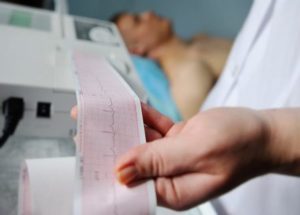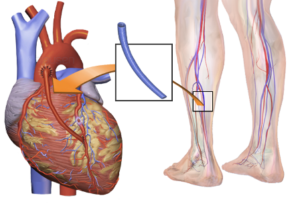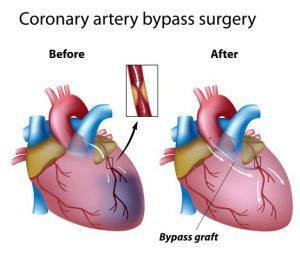Coronary Artery Bypass Grafting (CABG) is the most commonly performed procedure for the treatment of patients with coronary heart diseases. Arteries or veins from elsewhere in the patient’s body are grafted to the coronary arteries to bypass atherosclerotic narrowing and improve the blood supply to the myocardium (heart muscle).
CABG: Coronary Artery Bypass Grafting / Heart Bypass surgery
CABG is performed on a person who is suffering from Coronary Artery Disease which occurs due to the hardening of the arteries which supply blood to the heart muscle. Coronary Artery Bypass Grafting (CABG) surgery re-establishes sufficient blood flow to deliver oxygen and nutrients to the heart muscle. Other names of CABG are Bypass surgery, Coronary artery bypass surgery, and heart bypass surgery.

Symptoms of Coronary Artery Disease:
- Chest pain.
- Shortness of breath.
- Irregular heartbeat.
- Physical inactivity.
- Obesity.
- Poor diet.
- Stress/Anxiety.
Causes of Coronary Artery Disease:
- Smoking
- High blood pressure
- High cholesterol
- Diabetes or insulin resistance
- Sedentary lifestyle
Diagnostic Test for Coronary Artery disease:
Before proceeding with the CABG surgery: the doctor will do a physical or clinical examination test to check the individual health condition. Tests are done to find out which arteries are clogged or how much they are clogged. Diagnosis tests include:
- ECG: Electrocardiogram is a test to detect and record the heart’s electrical activity and help to locate the heart problem.
- Stress Test: Basically exercise test to make the heart work hard.
- Echocardiography: uses sound waves to create a moving picture of the heart.
- Coronary Angiography: uses dyes and x-rays to show the inside view of the arteries.

Procedure of CABG Surgery:
- 1st step: The doctor will sew the sternum together with small wires i.e. those that are used to repair a broken bone.
- 2nd step: The doctor will insert tubes into the chest to drain blood and other fluids around the heart.
- 3rd step: The doctor will sew the skin over the sternum back together.
- 4th step: The doctor will put a tube through your mouth or nose into your stomach to drain stomach fluids.
- 5th step: In the final step doctor will apply a sterile bandage or dressing.

Precautions after CABG Surgery:
- Activity: After heart surgery, your body must heal for several weeks.
- Rest: During the day, balance your activity with rest times.
- Stairs: You may climb stairs
- Driving: Do not drive a car until after your visit with your surgeon.
- Bathing: Shower daily
- Feelings: Recovering from heart surgery also involves emotional healing and it’s very normal to have different feelings (fear, anger, denial, frustration, sadness).











